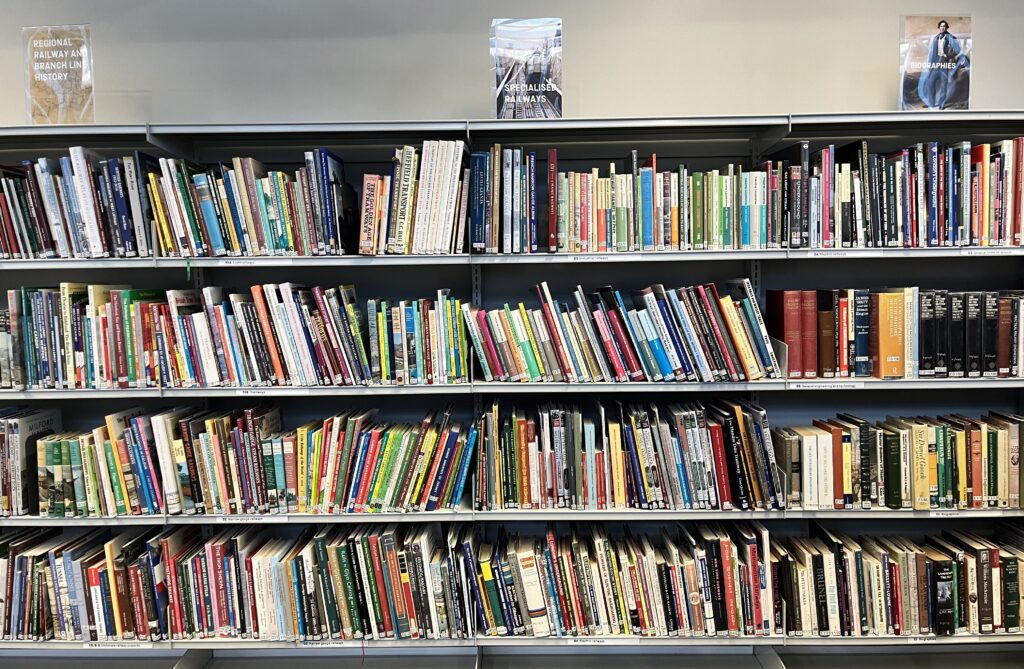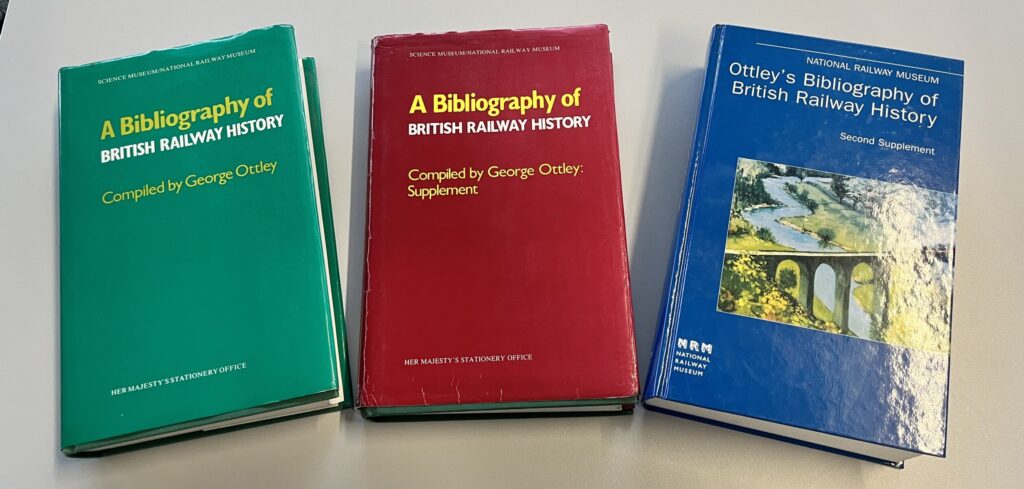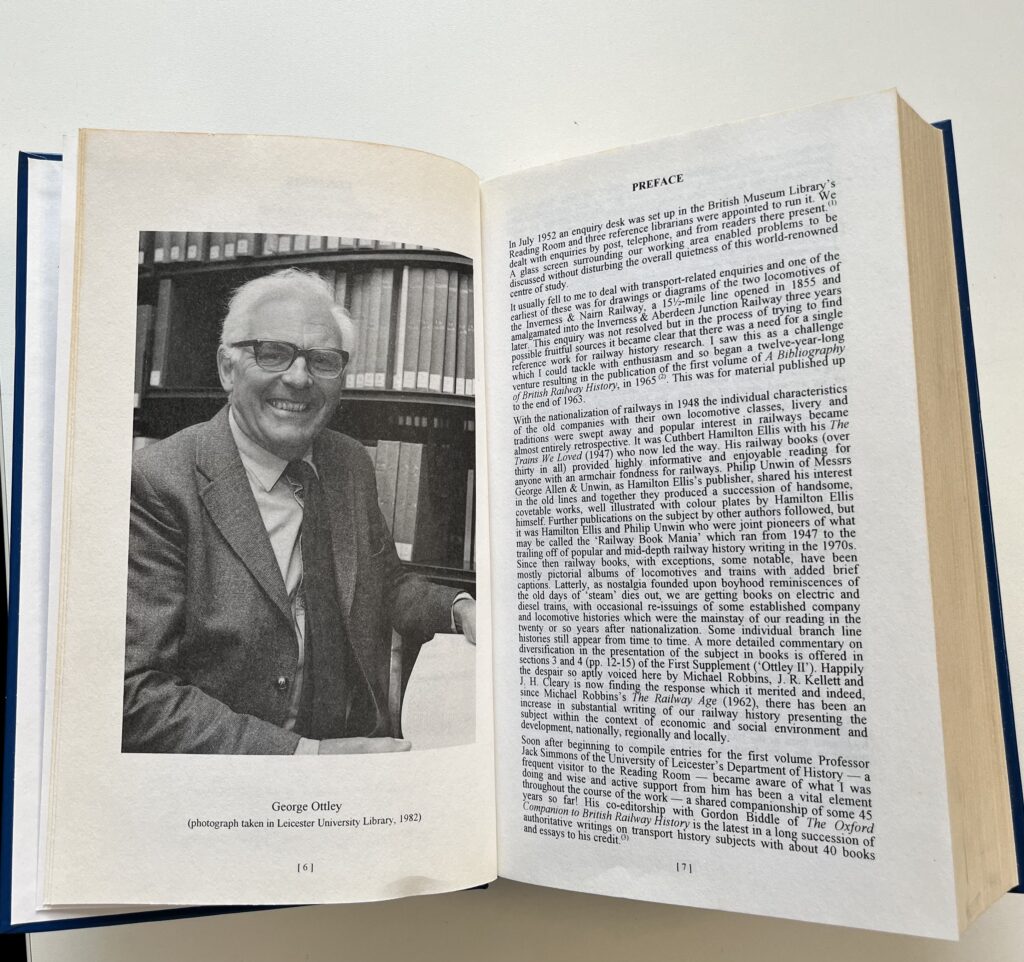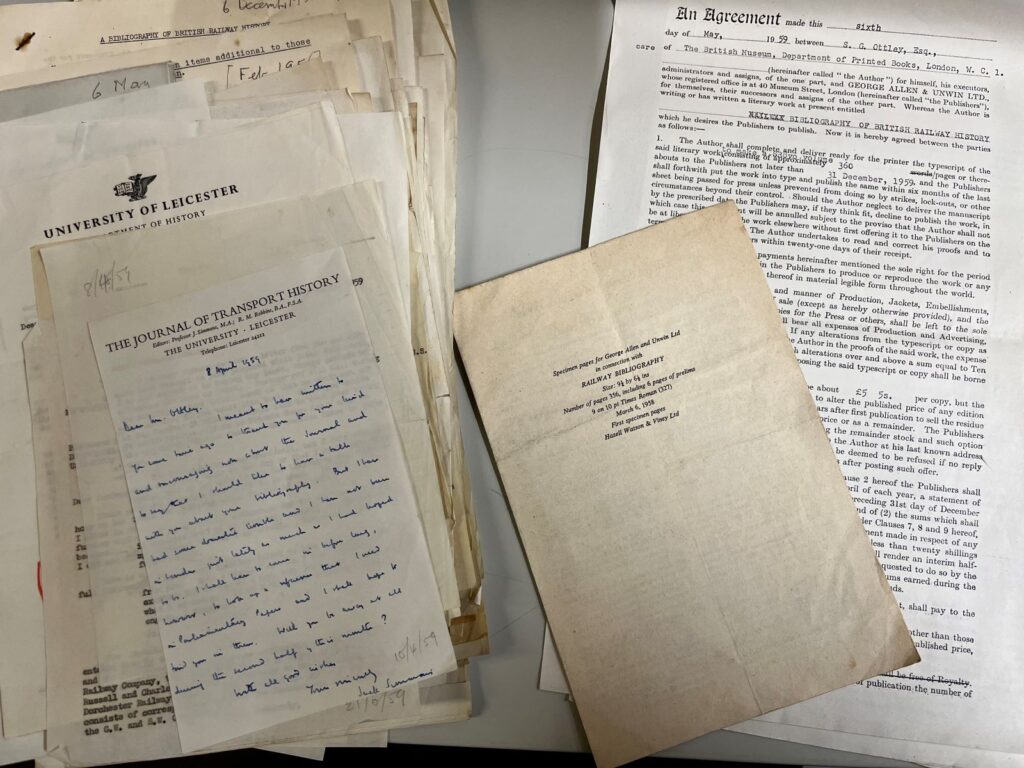If you are familiar with using libraries, you will probably know the books are usually arranged thematically. So you get books on history, art, science, fiction etc. shelved together, then subdivided into more specific themes—this is known as a classification system, and there are numerous systems. In public libraries the Dewey Decimal system is very common and works well as the libraries are generalist and provide coverage of a wide number of subjects.

However if you have a very specialised library like ours at the railway museum, such a generalist classification scheme has some drawbacks. The main one being that most of the books will fall into a small proportion of the classes. Much of our book stock would end up starting with a class of 625 or 385, and then you would have lots of numbers at the end in order to try to subdivide them. So not very user friendly. Therefore, like many other specialist libraries we choose to use a classification system that suits our specialist subject matter.
Fortunately for us, when the museum’s library began operations in 1975, a librarian and railway historian had already developed his own system.
That librarian was George Ottley. Ottley started work at the British Museum Library in 1951. He worked at the customer enquiries desk dealing with enquiries by phone, post and in person from the readers. With a keen interest in railway history, any transport related queries usually ended up with George. His efforts at trying to find sources for various obscure railways led him to realise the need for a reference work, to aid railway history research. He set out to collate a bibliography of British railway history, and with the resources of the amazing library he worked in, he was in a good place to start!
As a personal project, he had to fit in the research during his spare time and often spent his lunch hour checking his queries amongst the book stacks. His research spread far beyond the resources of the British Museum, and he visited and made enquiries at a large number of other libraries. Eventually he was able to complete his bibliography and it was first published in 1965, with the details of 7950 individual books listed and arranged into a bespoke classification scheme he devised.

When the National Railway Museum opened in 1975 it made sense to adapt this system for the museum library. So what we use is a modified version of the Ottley system. Why was it modified? Well Ottley’s bibliography was devised for British Railway history, and of course the museum had many books on railways around the world, so extra classes needed adding to reflect that. It also made sense to merge some of the categories, for example the Ottley scheme had different sections for Britain’s railways in the First World War (B4) and the Second World War (B7). It made sense to have a more comprehensive section that encompassed railways and warfare (B4-7).
Other changes were for practical reasons, with the C section which covered regional and country specific histories within the British Isles being split into numerous sections which would often have been quite limited. For example, the C7 section for the Channel Islands included just 6 titles in Ottley’s original work! So it made more sense to combine some of the smaller sections. In fact the largest single class in our library collection is C0A (histories of specific local areas, lines and places) isn’t in the Ottley scheme. In hindsight, it might have been better to split that section into smaller geographical areas like he did. But rearranging and re-labelling nearly 2,000 books and adjusting the shelf mark on our library catalogue would be a large task, and with the catalogue being online, it is easy to find the book you need, although not as easy for browsing the shelves! In other sections such as section D (Special types of railways) the NRM system follows the Ottley system exactly.

Of course like any system, it needs to adapt to change. Since Ottley developed his scheme in the 1960s and the founding of the museum library in the 1970s, developing technology and societal changes have led to us considering whether we need to add extra categories. So in recent times we have made use of the previously redundant E4 class mark to have a High Speed Rail & Technology section, while E11 has been added for Railways and the Environment.
Aside from the adoption of his classification scheme, our library catalogue also cites the Ottley reference for each publication where applicable.
Now back to George Ottley and his bibliographical endeavours. The year after the publication of his first bibliography, he left the British Museum to go to work at Leicester University Library. This didn’t stop him taking a keen interest in the transport related material there, and in 1981 he authored a guide to their Transport History Collections. In 1983 a second edition was published this time in association with the Science Museum and National Railway Museum. This didn’t actually include any new entries, but made some corrections from the original 1966 edition. A supplement was published in 1988, which added another 5000 entries, reflecting the boom in railway related literature over the previous two decades. A second supplement was published in 1998, but a by now retired George had handed over his compiling baton on to a team of fellow Railway & Canal Historical Society members (Grahame Boyes, Matthew Searle and Donald Steggles) this supplement added another 6700 entries, and was published jointly by the NRM and RCHS.
George Ottley died aged 89 in 2006. But the legacy of his work will live on into the future within our library collections, where his classification scheme is used daily by staff, visitors and researchers in our library. The museum also holds a collection of his papers related to the compiling and publication of his bibliography in our archive collections. The image below includes an agreement with the publisher in 1959 which indicates the book would be approximately 360 pages, it ended up being published 6 years later and had over 680 pages!

The current version of the classification scheme can be found on our catalogues page, where you can also search the library catalogue. Search Engine, our library and archive centre is open to all visitors to the museum to browse our library collections, please see the research and archive pages on our website for current opening hours.
The post A class of his own: George Ottley and our library classification system appeared first on National Railway Museum blog.

